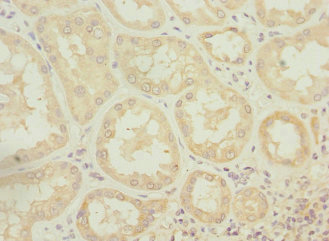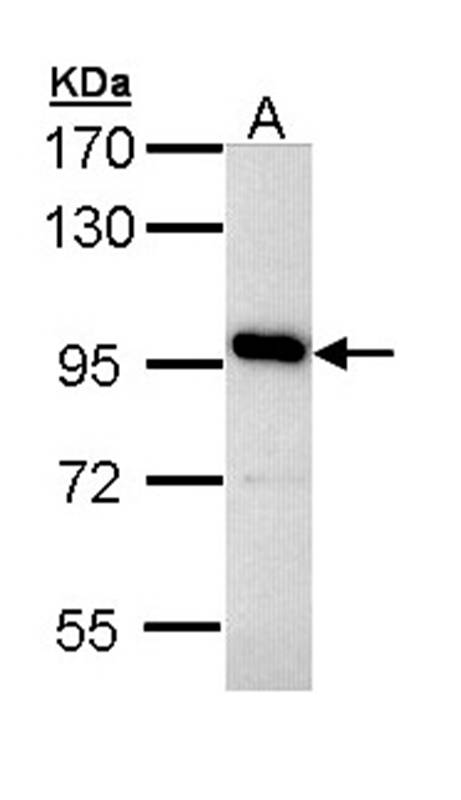ATP6V0A4 antibody [N1N3-2]
GTX111243
ApplicationsWestern Blot
Product group Antibodies
TargetATP6V0A4
Overview
- SupplierGeneTex
- Product NameATP6V0A4 antibody [N1N3-2]
- Delivery Days Customer9
- Application Supplier NoteWB: 1:500-1:3000. *Optimal dilutions/concentrations should be determined by the researcher.Not tested in other applications.
- ApplicationsWestern Blot
- CertificationResearch Use Only
- ClonalityPolyclonal
- Concentration1 mg/ml
- ConjugateUnconjugated
- Gene ID50617
- Target nameATP6V0A4
- Target descriptionATPase H+ transporting V0 subunit a4
- Target synonymsA4, ATP6N1B, ATP6N2, DRTA3, RDRTA2, RTA1C, RTADR, STV1, VPH1, VPP2, V-type proton ATPase 116 kDa subunit a 4, ATPase, H+ transporting, lysosomal (vacuolar proton pump) non-catalytic accessory protein 1B, ATPase, H+ transporting, lysosomal (vacuolar proton pump) non-catalytic accessory protein 2 (38kD), ATPase, H+ transporting, lysosomal V0 subunit a4, H(+)-transporting two-sector ATPase, noncatalytic accessory protein 1B, V-ATPase 116 kDa, V-ATPase 116 kDa isoform a 4, V-ATPase subunit a4, V-type proton ATPase 116 kDa subunit a, vacuolar proton pump 116 kDa accessory subunit, vacuolar proton pump, subunit 2
- HostRabbit
- IsotypeIgG
- Protein IDQ9HBG4
- Protein NameV-type proton ATPase 116 kDa subunit a isoform 4
- Scientific DescriptionThis gene encodes a component of vacuolar ATPase (V-ATPase), a multisubunit enzyme that mediates acidification of intracellular compartments of eukaryotic cells. V-ATPase dependent acidification is necessary for such intracellular processes as protein sorting, zymogen activation, receptor-mediated endocytosis, and synaptic vesicle proton gradient generation. V-ATPase is composed of a cytosolic V1 domain and a transmembrane V0 domain. The V1 domain consists of three A and three B subunits, two G subunits plus the C, D, E, F, and H subunits. The V1 domain contains the ATP catalytic site. The V0 domain consists of five different subunits: a, c, c, c, and d. This gene is one of four genes in man and mouse that encode different isoforms of the a subunit. Alternatively spliced transcript variants encoding the same protein have been described. Mutations in this gene are associated with renal tubular acidosis associated with preserved hearing. [provided by RefSeq]
- Storage Instruction-20°C or -80°C,2°C to 8°C
- UNSPSC12352203




